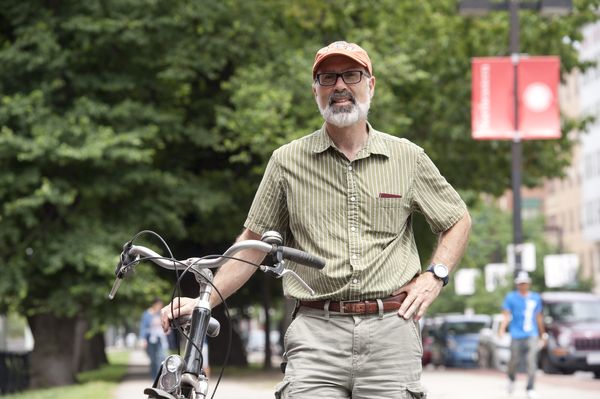3Qs: Light at the end of the traffic tunnel

Peter Furth, a professor of civil and environmental engineering at Northeastern, recently received a $260,000 National Science Foundation grant to study self-organizing traffic lights, which communicate with one another over peer-to-peer networks. These networks could create safer and more efficient traffic patterns than existing systems that currently either use sensors to detect traffic or rely on coordinated and timed loops—which can be difficult to program and make travel less efficient for public transit and pedestrians.
How do self-organizing traffic lights differ from standard signals?
You use actuated signals —traffic responsive signals— as a base, but equip them with methods of peer-to-peer communication so they can organically organize themselves. They might form a wave of green lights one cycle, but the next cycle that might not work out. By communicating, one intersection can tell the next intersection, “I just turned green. Expect my cars to arrive in a certain amount of time.” They can try to coordinate, but they’re not fixed to a clock.
How can they make travel more convenient for buses, which tend to travel at a slower rate and stop more frequently than regular automotive traffic?
This can make a big difference because buses don’t advance at the same average speed as regular traffic. Buses are constantly interrupting things, but with self-healing logic, the signals can start to heal themselves and get back into their regular routine once the bus has gone by.
When we do try to give priority to buses in America—and only a few cities do—we’re often very cautious about it because it messes up the traffic patterns for everyone else. But with this, it’s easy to give priority to transit because the traffic lights can get themselves back into sync.
What are the first steps toward implementing this kind of system in an urban area?
The first step is to, in an experimental environment, show that logic like this can deliver a significant improvement. If that happens, then the Federal Highway Administration or a state highway department could test it out and use it. The signal controllers—the machines that we have out on the streets to control the traffic signals—all have embedded computers capable of applying this logic. But right now, we’re just trying to show that this kind of system could work.





